
Traditional Japanese Accommodations
What are traditional Japanese accommodations?
What are traditional Japanese accommodations?
Traditional Japanese accommodations stand out from the rest because of how culturally woven and unique they are. They are designed in a minimalist yet practical manner, and they’re also great places to reconnect with your mind, body, and spirit. Usual Japanese accommodations are ryokans, shukubos, and minshukus. These unique accommodations offer a homey and comfortable atmosphere throughout.
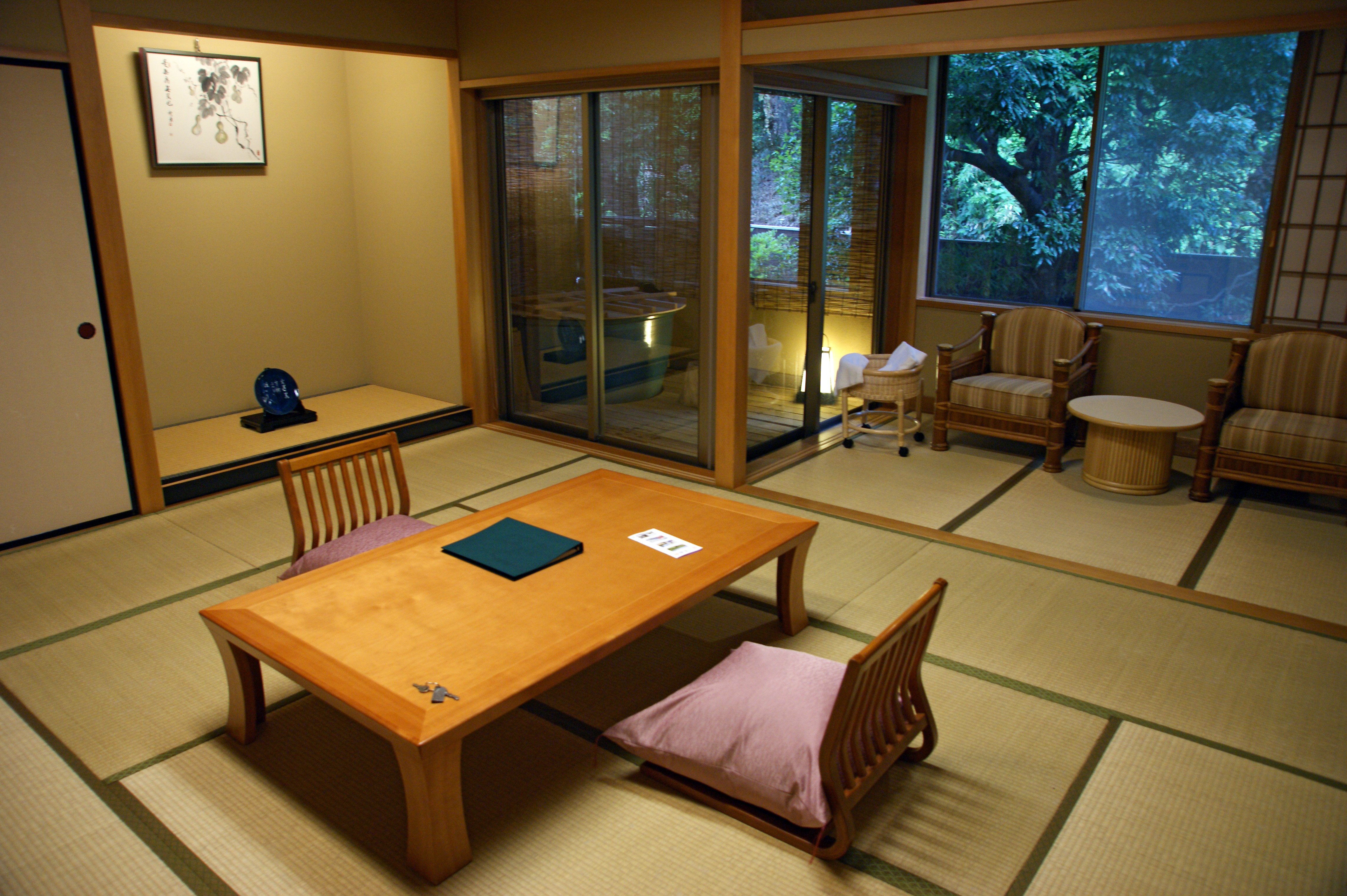
Source: 663highland on Wikimedia Commons
The historical and cultural significance of traditional Japanese accommodations
The historical and cultural significance of traditional Japanese accommodations
While Japan is known for its incredible technological advancements, some places here will still take you back in time, made possible by its historic attractions and old traditions. Accommodations in certain destinations have also kept their charming old-world design. While staying in one, you will be able to immerse yourself in the authentic living experience of the Japanese, as well as the rich culture it possesses. Some practices still observed in these accommodations are putting on soft slippers in exchange for your shoes and having a nice cup of tea in the tatami room.
Types of traditional Japanese accommodations
Types of traditional Japanese accommodations
| Accommodation | Definition |
|
Ryokans 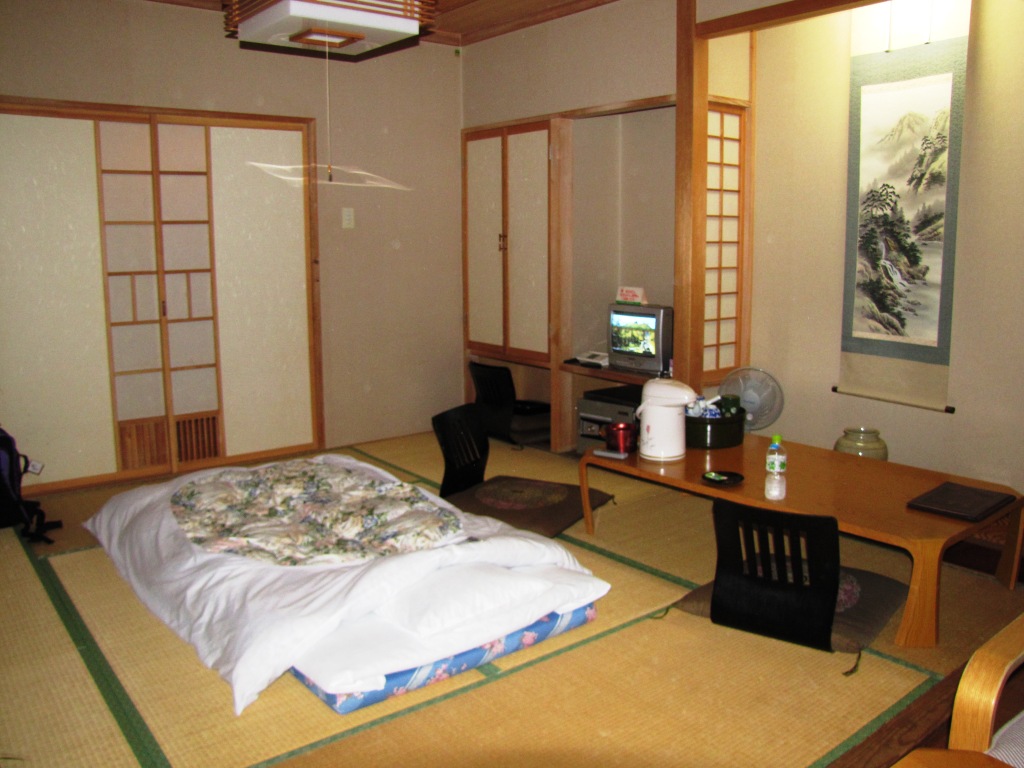 Source: צילום עצמי on Wikipedia Commons |
Ryokans are traditional-style inns found in Japan. This accommodation type is often located in areas with hot springs, allowing guests to take a dip easily. Traditional amenities of a ryokan are a tatami room and a common room, and the beds are often on the floor. Staying here also means getting to experience wearing a yukata! |
Minshukus Source: Yoshio Kohara on Wikimedia Commons |
The beauty of minshukus is that they’re often run by families, allowing you to have a more personalized stay experience. Minshukus can be compared to a wonderful bed and breakfast, and you can normally find them in touristy areas. They also often only have limited rooms, thus providing you with extra care and attention. |
Shukubos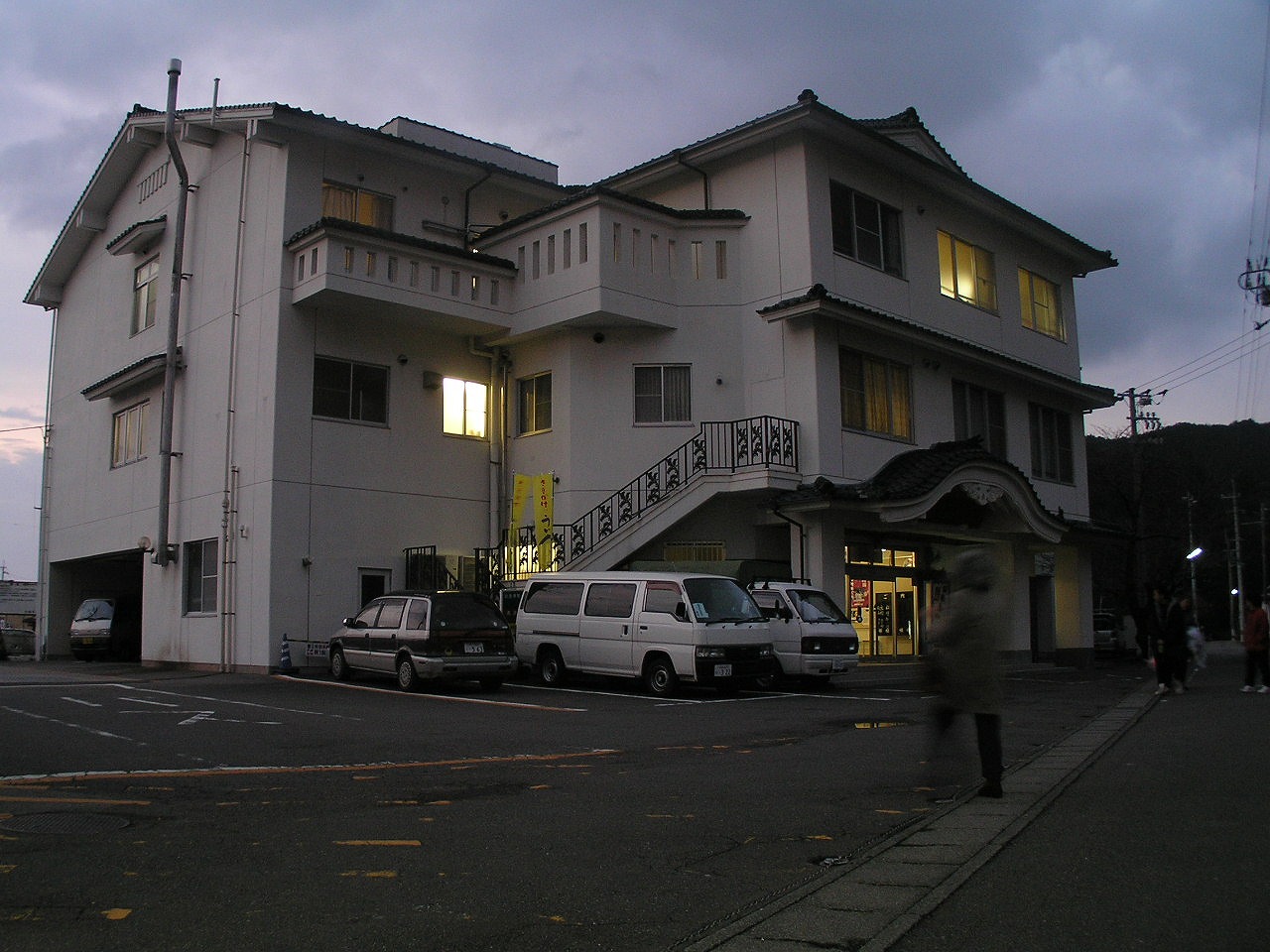 Source: 夕暮れのブランコ on Wikimedia Commons |
Shukubo means “sleeping with the monks.” So, in every sense of the word, this accommodation type allows you to experience lodging within a temple with the said monks. This is the perfect stay option for those who want to learn more about the calm lives of Buddhist monks. Some shukubos also offer cooking lessons. |
Machiya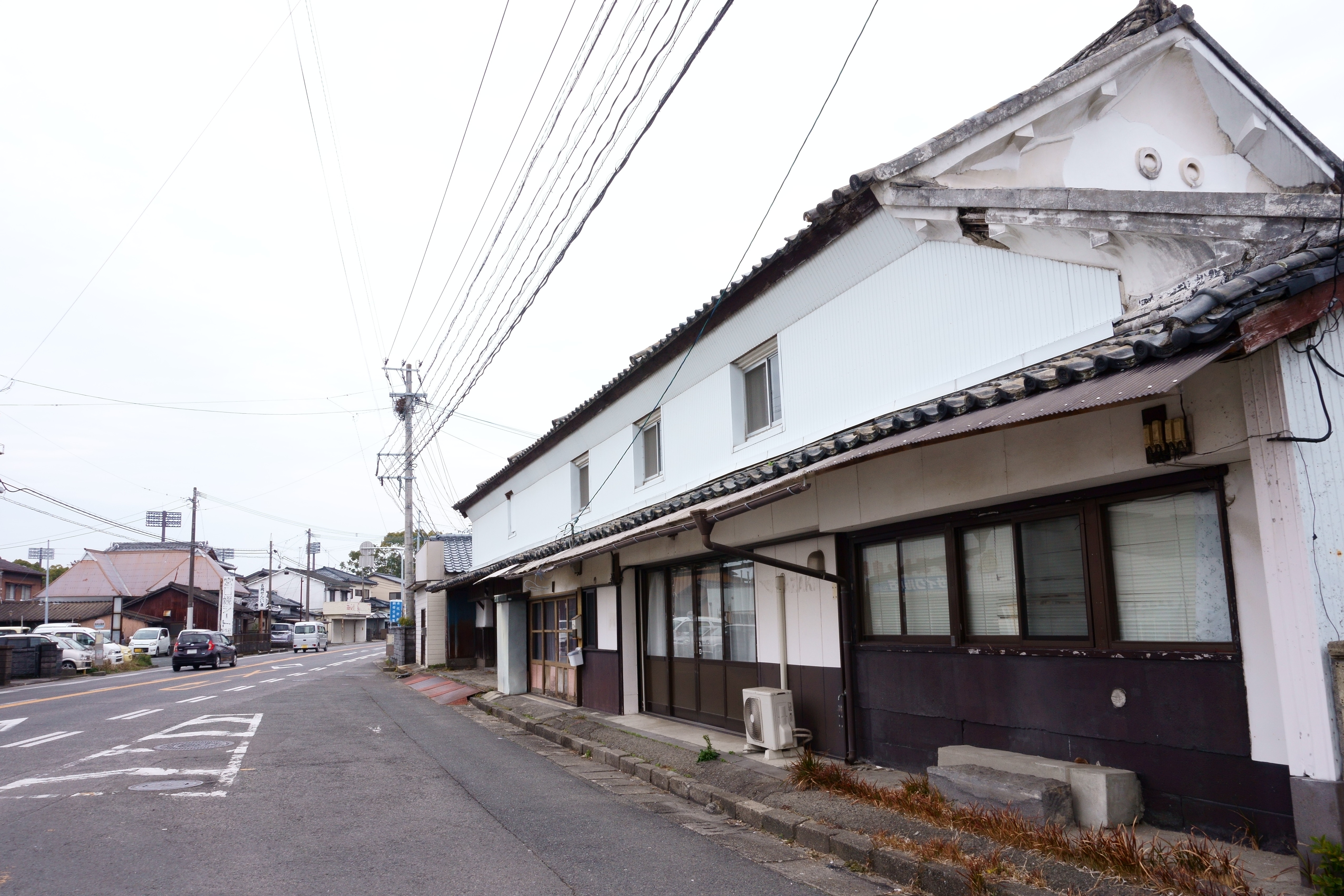 Source: Peka on Wikimedia Commons |
Machiyas are wooden townhouses that are not just for residential purposes, but also for different businesses, such as kimono shops and dry goods stores. Machiyas are often found in the cities of Kyoto and Takayama. A couple of features of traditional machiyas are having a narrow front and garden access. |
A guide to some Japanese terms
A guide to some Japanese terms
| Parts of a Traditional Accommodation | |
| Shoji | Shoji is a mixture of a door and window and is opened in a sliding manner. This feature is common in Japanese accommodations and it provides soft, natural light. |
| Fusuma | This is a type of rectangular sliding door that opens up one space to another indoors. It is also usually 90 cm wide. |
| Tatami | Tatami — or tatami mats — is a normal thing in Japanese accommodations. It’s soft and intricately woven to keep you comfortable. In the earlier years, this type of flooring was made of wood. |
| Tokonoma | Also known as toko, a tokonoma is a concave section in a home used as a dedicated space for certain artistic items, such as a hanging scroll or a plant. |
| Onsen | Onsen means a hot spring, mostly made out of natural materials. For a hot spring to be considered a real onsen, the waters must be 25°C (77°F) and above. |
| Futon | A futon is simply a mattress usually located on the floor of a Japanese accommodation. |
| People-Related Terms | |
| Okami | Okamis are the ones who oversee the property and take care of the guests’ needs. They must attend to all sorts of affairs regarding their business and master hospitality. Plus, this role is often handed down to next of kin, making it a generational practice. |
| Nakai-san | A nakai-san is the equivalent of a room maid and is responsible for keeping the rooms and other spaces clean and organized. They also usually wear kimonos. |
| Yukata | Yukata is known as the laid-back version of the iconic kimono. This garment is usually made of cotton and used for bathing. It can also be worn by both men and women. |
| Kimono | Kimono is the national dress of Japan and is made of silk, satin, and linen. This formal clothing also boasts a floral design. |
| Obi | This is a type of sash or belt often tied around the waist while wearing traditional clothing such as a kimono or yukata. |
| Omonetashi | Omonetashi is a traditional culture, which means to look after guests properly and kindly. This hospitality is what most Japanese hosts practice, and it doesn't have a direct translation into English. |
| Ikebana |
Ikebana is the art of arranging plants into a vase or a more historic container. This practice is very technical and can take years to properly master, as there is a specific way to arrange or position the flowers. |
Features of traditional Japanese accommodations
Features of traditional Japanese accommodations
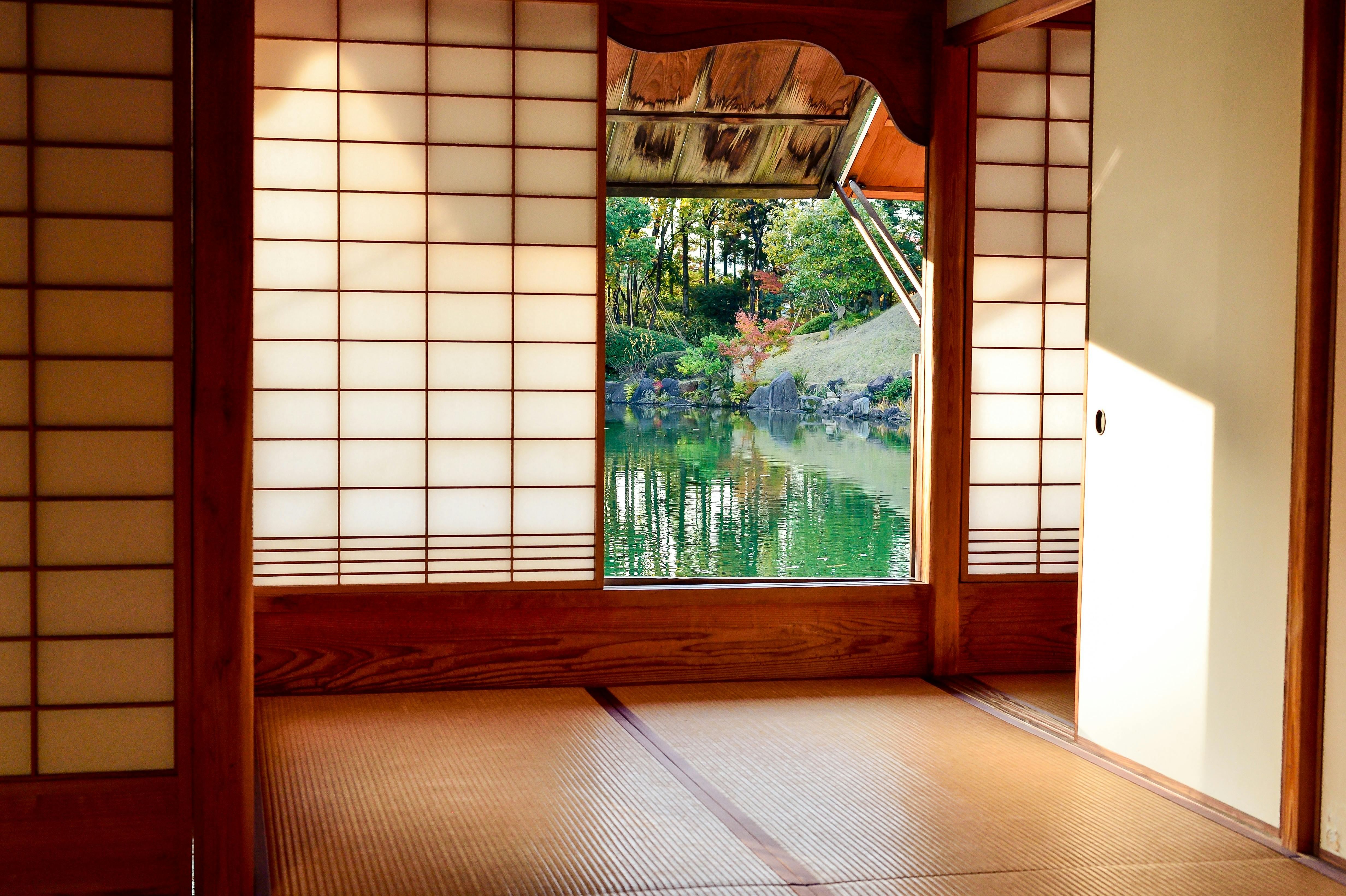
While there are unique offerings provided by each accommodation, there are certain things that guests can observe that are present in most of these stays. For instance, there are the tatami mats, which make up the flooring; tokonomas, which are designed hollowed sections in a room; onsen or hot springs, perfect for a rejuvenating experience; shojis, which is a screen functioning as a door and window; and fusuma, which is a rectangular sliding door. Here are the other typical features of a Japanese accommodation:
Low tables
Low tables, also called horigotatsu and chabudai, are very common in Japanese accommodations, no matter if it's in a private residence or a commercial space. This kind of table is usually used to have a tea experience with your loved ones. It is also where the Japanese share meals, and they say that having this dining layout helps improve one's bond with their families. It is a way of connecting more with the people around you.
Tea and tea sets
Japan is also known for its teas of all kinds such as sencha and matcha, and people drink it together while gathered on a low table. With tea being such a huge part of Japanese culture, it's no surprise that they have a wide variety of tea sets, a lot of which have significant ties to their heritage. These tea sets are also usually made of high-quality clay and porcelain, which makes them more versatile and durable.
Gardens and outdoor features
Traditional Japanese accommodations have beautiful outdoor spaces, perfect for relaxing and taking in the fresh air. For instance, the gardens here are meticulously designed, reflecting their philosophical way of living. You'd never see any artificial plants in this area, as they want the space to be as natural and refreshing as possible.
Why choose a traditional Japanese accommodation over a hotel?
Why choose a traditional Japanese accommodation over a hotel?
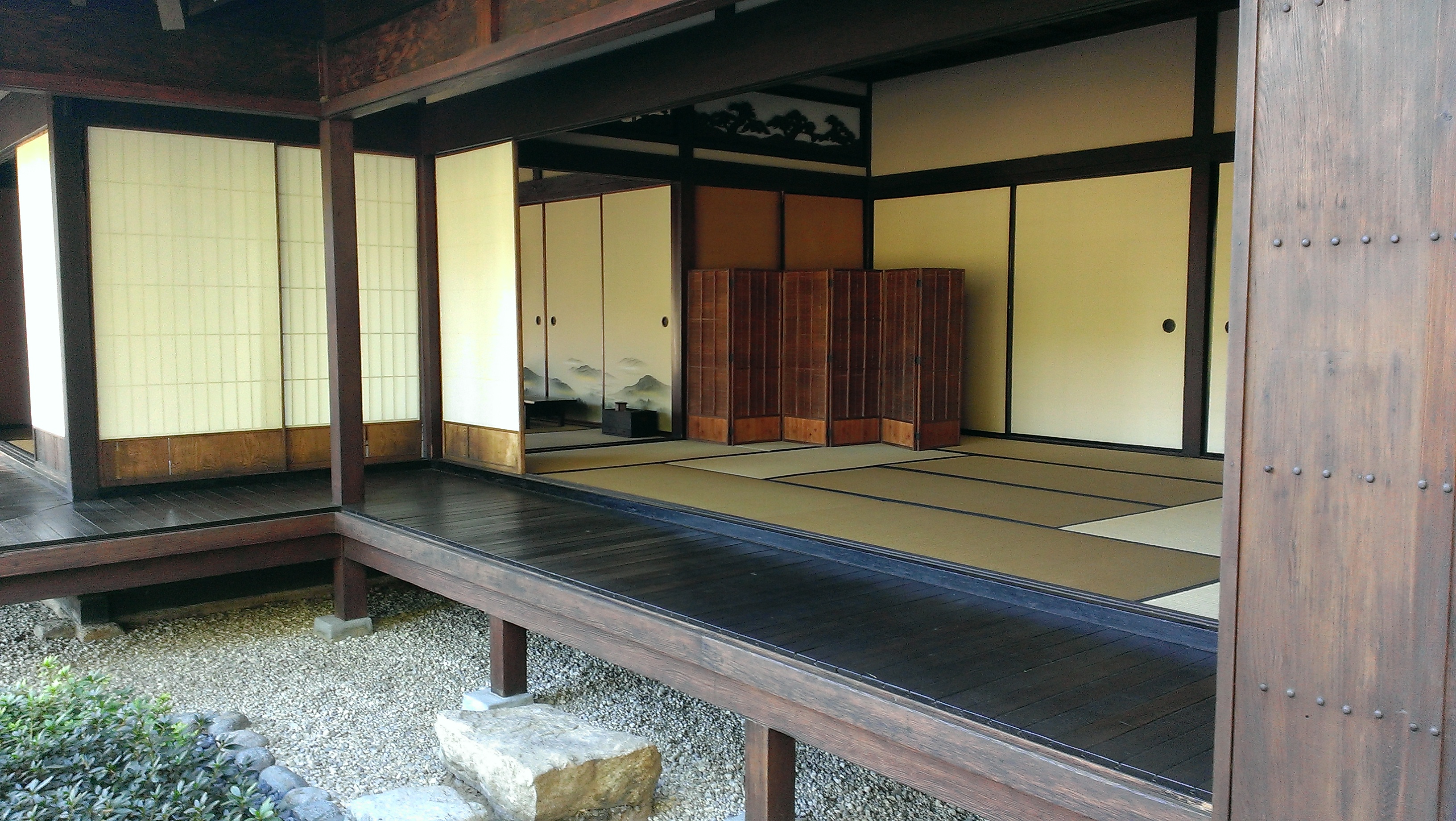
Photo by JayWalsh from Wikimedia Commons
To immerse yourself in Japanese culture
A great way to immerse yourself in Japanese culture is by staying in a traditional accommodation and upholding their practices and etiquette. It starts with wearing yukatas or kimonos, wearing slippers, attending a tea ceremony, and so much more. Doing these things helps you get an idea of how the locals live more authentically, which is sometimes not offered in modern accommodations.
To experience Japanese hospitality
Japanese hospitality is known as omonetashi. It doesn't have a direct English translation, but it essentially means to take care of guests properly and wholesomely. It's something that Japanese hosts practice, even more so when you book a traditional accommodation because it means that the service being provided to you is more personalized and hands-on, compared to hotels.
To enjoy authentic Japanese cuisine
Another thing that Japan is famous for is its rich and diverse cuisine — from the delectable miso soup to the iconic takoyaki. While these accommodations, especially shukubos, usually offer homemade and authentic Japanese food, some may even allow guests the opportunity to cook dishes along with the staff. Doing so will make you appreciate the art and care that goes into making a particular food.
To interact with locals better
Since traditional accommodations here are often family-run and provide a more intimate atmosphere, you'll have the chance to connect with the locals better than when you stay in a hotel. If you can't understand each other, you can communicate with them through actions. You may also learn different things about the area and other traditions from a local perspective.
To learn Japanese arts and crafts
Traditional Japanese accommodations come with enough privacy and serenity for you to just sit back and admire the beauty of the culture. While here, you can learn different arts and crafts, such as ikebana. This particular art form is about rearranging flowers in a vase or other important containers per strict guidelines. There's also the art of calligraphy should you want to learn how they write beautifully.
To relax in Japanese baths
What better way to relax your tired or sore muscles than by taking a soothing bath in your home away from home? Most accommodations have traditional bathtubs or onsen access, so you can have a rejuvenating time throughout. It also helps in calming down your thoughts and just reconnecting with yourself in peace.
To experience communal living
Since a lot of Japanese people prioritize sharing spaces to become closer, it's no surprise that accommodations here have shared facilities, such as bathrooms, kitchens, gardens, and dining rooms. It does bring people together, and it opens up the chance to socialize with other guests as well. You can all swap stories and even make plans during your vacation. Before you know it, you gain new lifelong friends!
To embark on guided local tours
Explore more of the area by booking a tour headed by a local. This way, you'll hear more authentic experiences from those who have lived there long. Local tour guides have a more personal understanding of their hometown, providing extra depth to the experience.
Etiquettes to follow in a traditional Japanese accommodation
Etiquettes to follow in a traditional Japanese accommodation
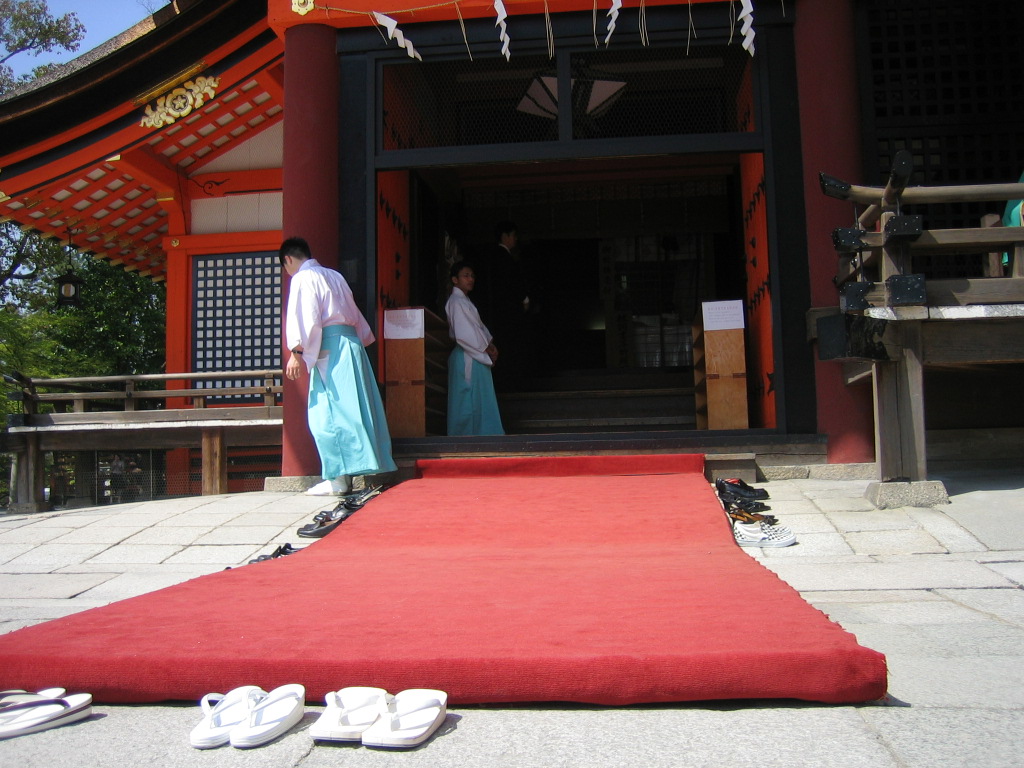
Japan has a meticulous dining etiquette that everyone should follow, as it's part of their culture. Here, people eat on a low table and sit on the tatami mats. If your food comes in a small bowl, it's ideal to pick it up and put it close to your mouth. Meanwhile, for shared dishes, you must use a dedicated chopstick to get from them. It's also important to remember to avoid loudly burping and blowing your nose while at the table, as it's considered bad manners.
Respecting local customs and traditions
It's important to adapt yourself to the local culture and traditions if you're vacationing in another country. For instance, Japan has a lot of customs that one must follow. The common ones are taking off your shoes when heading inside, bowing at the right occasions, and always being on time. If you're not sure what's the right thing to do, you're free to ask the staff or learn these customs beforehand. Moreover, if you have a visible tattoo and want to go in an onsen, there's a chance that they might not allow you, as they are considered taboo in some places.
Temple etiquette
Religious establishments have unique etiquette being followed. Although there's no stern dress code in place when you stay in a shukubo or visit a religious place, it's best to wear something appropriate and well-covered. A lot of the traditional religious accommodations let you pray. There's often an incense you can make use of, and you have to put it in the burner after waving your hand at it to remove the flame.
Clothing etiquette
Japan is famous for having a unique and colorful fashion sense nowadays. But when you stay in traditional Japanese accommodations, it's best that you still have modest outfits, thus not showing too much skin. Doing so aligns with the Japanese's old traditions.
Japanese bath etiquettes
Since onsens or Japanese baths are often common spaces, one must abide by customs and traditions to avoid misunderstandings. It's best to wipe your body first or take a shower before dipping into the bath. You should also not be drunk while using this facility. Bathing in onsens is also usually done while wearing no clothes.
Destinations
Destinations
Best Japanese prefectures for a ryokan stay
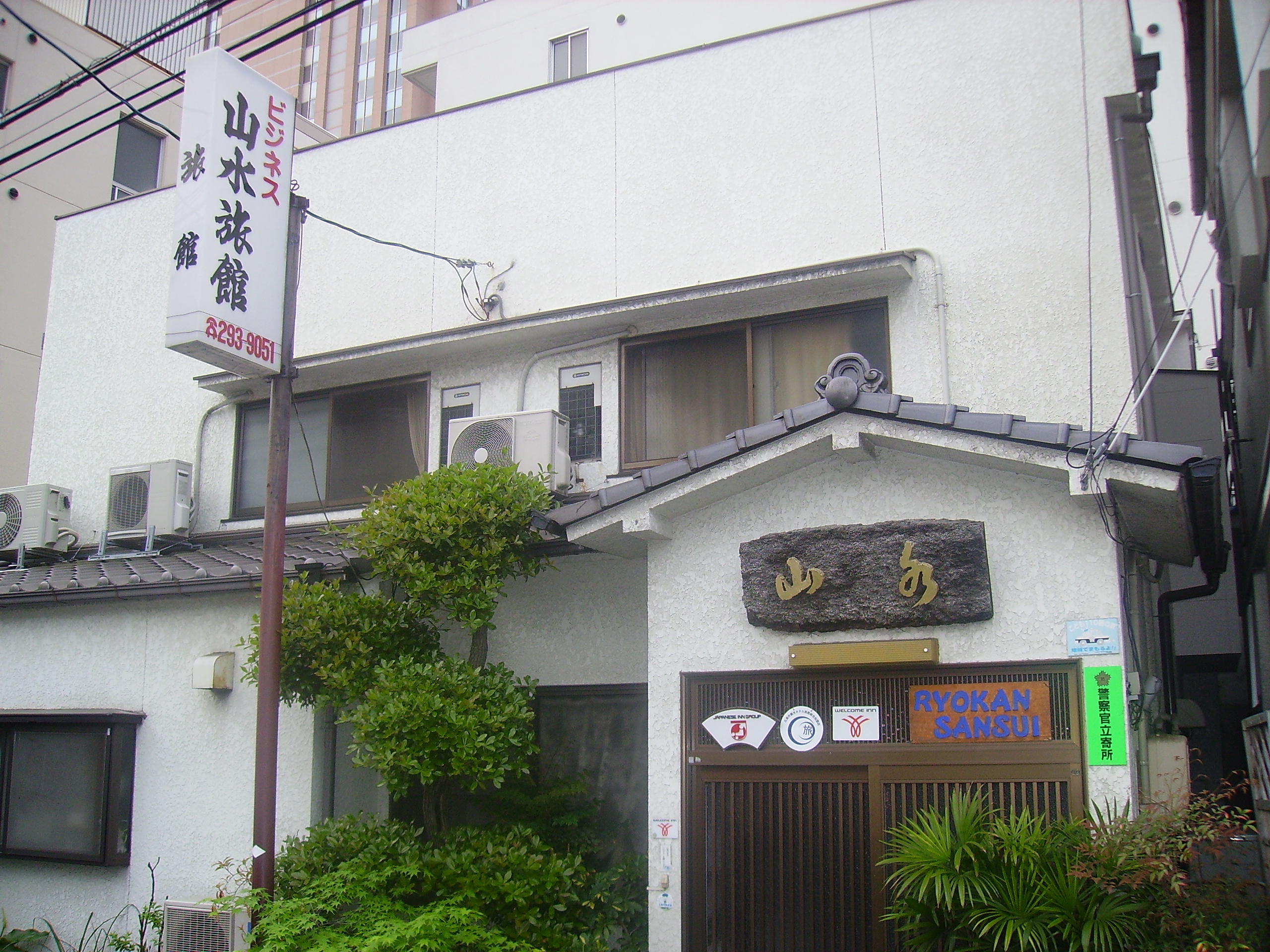
Source: Photo by J. Miers - User: (WT-shared) Jtesla16 at wts wikivoyage from Wikimedia Commons
Hiroshima
This bustling city in the Chugoku Region boasts a lot of history and advancements. Hiroshima was the target of a huge atomic bomb, causing a lot of casualties and years of reconstruction. However, some remnants of the old world can still be seen and appreciated, such as the Hiroshima Castle. While here, you can indulge in some of its must-try foods and try other things to do for the ultimate getaway experience. The city also has a lot of ryokans for you to check out. Meanwhile, Miyajima Island is known for being a romantic destination, and you can visit the iconic Itsukushima Jinga and Daishoin. For your stay here, opt for a ryokan for a more authentic experience.
Nagano
Considered the biggest city in Nagano Prefecture, Nagano is the place to be if you want to experience traditional and modern delights. This place is rich in temples that you can visit and appreciate, such as Togakushi-Jinja, Zenko-Ji Temple, and Togakushi Shrine Kuzuryusha, among many others. You can also stop by the Nagano Prefectural Art Museum to see beautiful calligraphy works. There are also numerous ryokans disposed of in different areas, such as in Hakuba, Karuizawa, and Nozawa Onsen.
Yamanashi
The spectacular Yamanashi Prefecture allures guests with its many attractions and things to do. Make sure to visit the iconic Nishizawa Gorge if you love hiking and connecting with nature. For other thrilling adventures, go to Fuji-Q Highland, which has been amusing guests with its exciting rides for the past few decades. You can even witness the beauty of Mt. Fuji here. There are a couple of ryokans present in Fujikawaguchiko and near Mt. Fuji.
Hokkaido
Hokkaido is the second-largest island in Japan and boasts many skiing sites. You can even visit several onsen spots and enjoy day trips in places such as Sapporo. Some of the top attractions here include Mt. Yotei and Farm Tomita. For classic ryokans, Niseko, Otaru, and Noboribetsu have plenty of them for your choosing.
Shizuoka
On the south coast of Japan lies Shizuoka, a destination offering incredible green tea and tuna. But besides these delicacies, other top spots here are Miho no Matsubara and Nihondaira, with the latter allowing visitors to admire panoramic views of the famous Mt. Fuji. Make the most of your time here by checking out the best ryokans in Shimoda and Gotemba.
Tokyo
When one thinks of Japan, Tokyo may be the first one to come to mind. This busy and vibrant capital has the perfect blend of advanced technology and vintage touches — the best of both worlds! Besides modern attractions such as Nezu Museum and Shinjuku Golden Gai, Tokyo also has many temples and parks. Level up your stay by booking a ryokan in Shinjuku City, Shibuya City, and Asakusa, among others.
Chiba
Situated near Tokyo is Chiba, which stands out on its own for housing two Disney parks. Apart from the mentioned theme parks, the city also has Chiba Zoological Park, where you can spot adorable red pandas and other animals. After trying several things to do here, coming home to top ryokans in Narita or near Chiba would be perfect to relax.
Kanagawa
The prefecture of Kanagawa is bursting with historic attractions and natural wonders, perfect for a relaxing retreat alone or with loved ones. Its capital, Yokohama, houses a huge Chinatown, where you can buy many Chinese-based delicacies or eat at local restaurants. This prefecture is also home to ramen spots in places such as Yokohama. The cities of Odawara, Enoshima, Yokohama, and Kamakura also all have great ryokans on offer.
Best Japanese destinations for a minshuku stay
Shikoku
This Japanese island is best known for its 88 Temple Pilgrimage, which spans over 1,200 km (746 mi). Both locals and tourists go to this holy place to reflect and ponder, and visiting each temple can take up to 40 days. Parks also abound here, such as Ritsurin Garden and The Kochi Prefectural Makino Botanical Garden. Immerse yourself in Shikoku by staying in a minshuku.
Osaka
If you want to be right in the middle of the hustle and bustle, head to Osaka! Be sure to also check out the top minshukus here for a comfy stay. Moreover, this metropolitan city amazes visitors with its temples and shrines, street food, vibrant nightlife, and overall energy. Top highlights of Osaka include Universal Studios Japan, Osaka Aquarium Kaiyukan, and Osaka Castle.
Kyoto
Kyoto offers all kinds of wonders for all kinds of travelers. This historic city, once known as the capital of Japan, is where history prevails, which you can observe in its temples, such as Kinkaku-ji and Kiyomizu-dera. For delicious food and other goods, head to the iconic Nishiki Market or join food tours instead. Plus, this destination boasts Instagrammable places and hidden gems for you to discover. There are also lots of minshukus here.
Magome
This post-town boasts a long history while having touches of the contemporary era here and then. While here, you can walk down the pebbled roads and immerse yourself in the storied past. The roads here also offer access to tea shops, museums, and many more. Do check out the best minshukus in Magome.
Fukuoka
If you're looking for excellent accommodation in this city, fret not, as it provides minshukus perfect if you want to extend your stay here. Give into the bustling nightlife culture offered by Fukuoka. Apart from being one of the most populous cities in the country, Fukuoka is particularly famous for its cuisine. Here, you can taste authentic ramen and even dumplings.
Kamakura
While small, the city of Kamakura keeps guests entertained and amused with its lovely attractions and several things to do. Are you a fan of the beach? If so, head to the nearby Enoshima and get a tan or simply go for a swim. Moreover, the temple of Kotoku-in houses a huge Buddha statue. Explore all of these attractions efficiently by checking out the top minshukus in Kamakura.
Hakone
A peaceful retreat awaits you in Hakone. If you want to stay in a minshuku, you will have plenty of options here. This magnificent town is teeming with onsens, so it’s no surprise that it’s often called an “onsen theme park.” There are also plenty of state-of-the-art museums that you can visit, such as Pola Museum of Art and Hakone "Rene Lalique" Museum.
Takayama
Nestled in Gifu Prefecture is Takayama. While here during spring and autumn, make sure to attend the Takayama Festival to see many creative floats along the street and even a procession. You can even visit many attractions here with many things to do on offer. Are you feeling hungry? This city's best restaurants have got you covered. Moreover, head to Hida Folk Village — a gorgeous open-air museum focusing on architecture. After a long day of exploring, it would be best to stay in a minshuku in Takayama to unwind.
Nikko
Whether you’re religious or not, visiting Nikko will certainly be an experience of a lifetime. Make your stay here even more serene by booking a minshuku. Moreover, some of the must-visit temples here include Taiyu-in Temple and Nikkozan Rinnoji Temple, with the latter being here since the 8th century.
Naoshima
Naoshima may be a small island, but it sure does have a lot to offer! Art enthusiasts will surely have an unforgettable time here, as it’s filled with creative installations and lovely contemporary museums, such as Chichu Art Museum, Art House Project, and Benesse House Museum. There are also a couple of minshukus here.
Best Japanese destinations for a shukubo stay
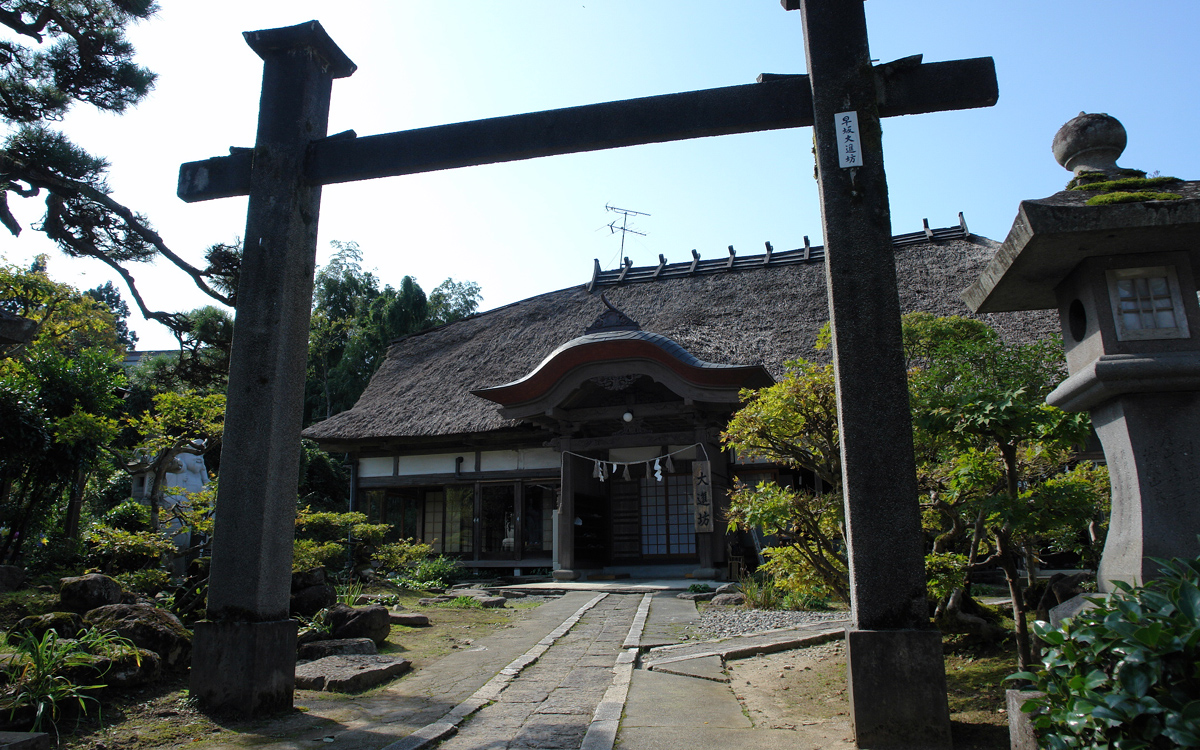
Source: Wikimedia Commons
Koyasan
This place is the embodiment of nature and spirituality, making it a must-visit for those who want to step back and take a breather. Koyasan is also said to be the place where Shingon Buddhism was birthed. Since it’s a religious settlement, there are also plenty of shukubo accommodations here.
Tokyo
Japan’s capital packs a punch in terms of its significance and offerings. Food lovers will have a fantastic time checking out fresh produce and seafood at Tsukiji Outer Market. And if you want to buy electronics and souvenirs, the district of Akihabara is the place to be. Despite its bustling atmosphere, this city also has a quiet side to it, made present by some of its accommodations. Check out the top shukubos here.
Nagano
Apart from its old temples, the city of Nagano also has modern offerings. For instance, you can visit the Nagano Olympic Stadium, which was one of the venues for the 1998 Winter Olympics. Moreover, Jōyama Zoo houses penguins, monkeys, and many more. Shukubo accommodations are also available in Nagano.
Nara
Tranquil and breathtaking — these are the words that best describe Nara. This city in Nara Prefecture is near Kyoto and Osaka, so you’ll be well-placed during your time here. You won't even have to worry about fun things to do here because it boasts several attractions and activities. Many temples hold immense significance in the city, such as the Horyuji Temple and Tōdai-ji. Don’t forget to book a shukubo in Nara, too.
Factors to consider before booking
Factors to consider before booking
Location
One of the most important things to consider when booking accommodation in Japan is the location. Some are situated in a remote setting, a bit far from bustling, commercial buildings or even other houses. On the other hand, some are centrally located. So, choose the one that suits your preferences.
Time of booking
Japan has all kinds of offerings that may vary seasonally, so book accommodation that will align with when you want to visit the country. If you’re itching to witness the spectacular cherry blossoms in full bloom, book accommodation during spring. Meanwhile, book a rental during winter if you want to enjoy skiing or other snow-related activities.
Price
Accommodations in Japan, especially traditional ones, are often budget-friendly, so you can save money for other expenses. Make sure that the rental you’re after is within your budget by checking it on the booking site. However, if you prefer a more elevated stay, you’re also free to pick accommodation that costs more.
Accessibility
For persons with disabilities, another important thing to consider is the accessibility features of an accommodation, which may include roll-in showers, wheelchair-friendly ramps, and more. These are often shown on the booking site, but you can also reach out to the staff to be sure.
Language barrier
If you’re just visiting Japan and don’t understand or speak the language, then it’s ideal to find accommodation with an English-speaking staff, or at least use translation devices to make your communication as seamless as possible. Having this certain feature helps in avoiding misunderstandings throughout your stay.
Accommodation type
As mentioned, there are a couple of accommodation types available in Japan, each with different purposes and designs. If you want to stay in a traditional-style inn, opt for a nice ryokan as this is the most common accommodation type. You can also choose to stay in a shukubo if you want to immerse yourself in their religious practices.
Meals offered
A lot of the meals offered in traditional Japanese accommodations lean towards healthy food, specifically vegetarian dishes. However, some of them also offer meat-based food. You may contact the staff to check what kind of meals they provide, whether or not they come with the booking, and if they cater to dietary restrictions.
Cultural experiences or local tours offered
What better way to explore Japan’s cities and towns than by booking a tour headed by a local? Luckily, some accommodations here offer these activities — letting you properly immerse yourself in the rich culture and traditions of the country.
Amenities and services offered
Most Japanese accommodations can offer amenities such as onsen baths and gardens, allowing you to pamper yourself after a long day of exploring the nearby attractions. But just to be sure, do look up if these amenities are available during your stay in the accommodation. Just note that a lot of accommodations provide shared facilities, one of which is the bathroom. However, if you want to have your own bathroom space for hygienic and personal reasons, you can contact the staff or simply find another place that offers this particular facility.
Traditional accommodations also come with traditional amenities, meaning that you'll find a lack of modern appliances and facilities, such as a washing machine, a fitness center, and a business center. Not having these amenities, though, helps you to disconnect from the outside world for a while.
Many traditional accommodations have early wake-up calls as well. This is because the staff or host wants you to make the most of your experience here. Sometimes, they'll provide you with a hearty breakfast early in the morning before you head out and explore the rest of the area. It leaves you more hours in the day to enjoy.
Rules and policies
Before anything else, it’s best to carefully look through the house, pet, and even temple policies, as they might not align with your interests. For instance, some accommodations don’t allow outside visitors to lessen disturbances. There may even be policies regarding the right clothes to wear to be respectful of the culture.
Guest reviews
It’s also a great idea to check out some of the reviews of the accommodation from previous guests, as it helps you gauge whether or not the place you’re eyeing is worth it. Guest reviews are very helpful in determining the quality of service and amenities of the place, such as regarding the opening and closing times of the onsens or how far is the accommodation from certain attractions.
Experience an authentic Japanese stay
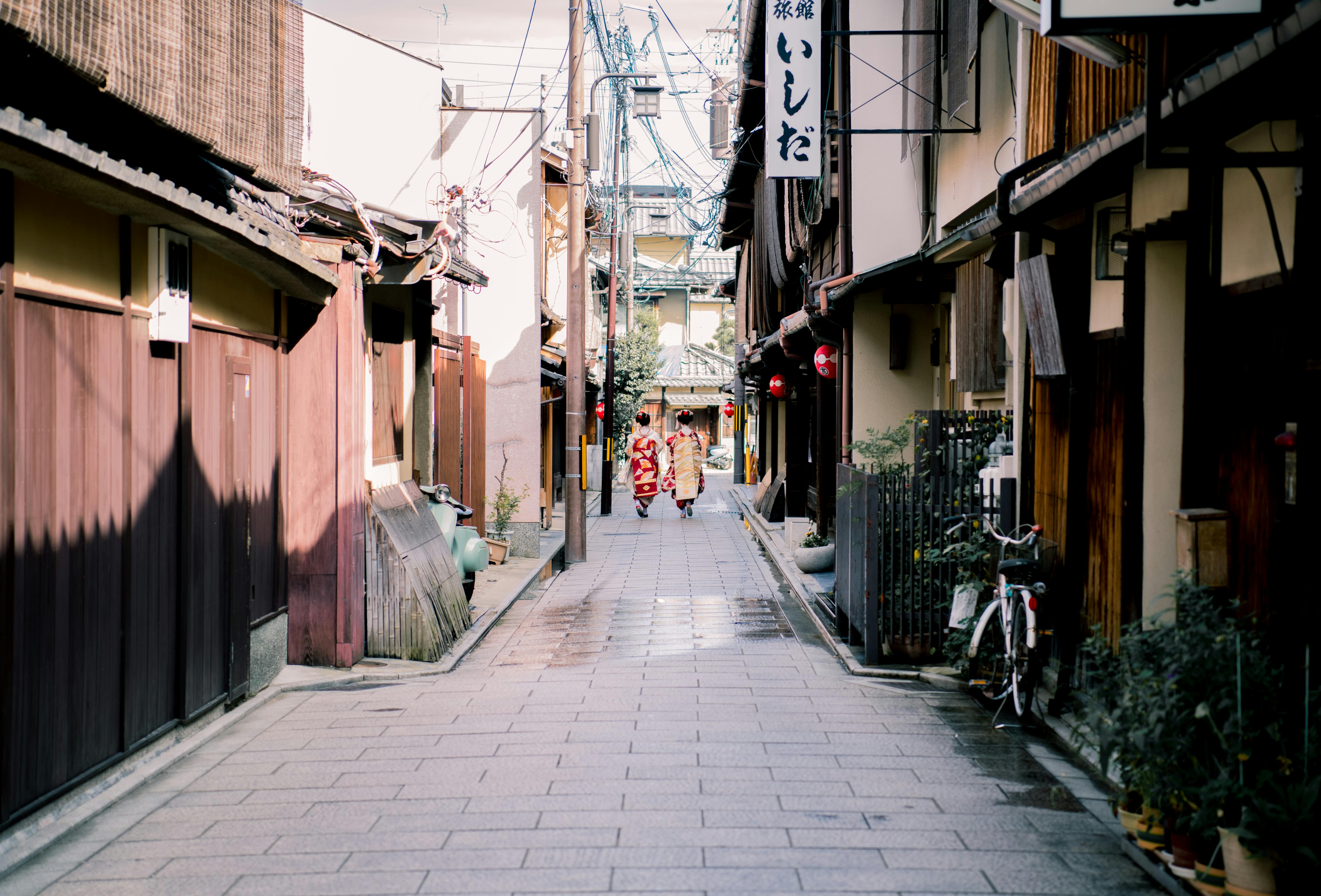
Source: Satoshi Hirayama on Pexels
Japan offers the best of both worlds — whether you’re here to see technological feats or for the historic temples, everyone is sure to have a memorable experience. A perfect way to fully immerse yourself in the spirit of Japan is by booking a traditional accommodation. To find out what accommodation is the one for you, check out this article. Japan is waiting for you!
Ryokan Stays in Japan
Minshuku Stays in Japan
Shukubo Stays in Japan



















































































Create an account to